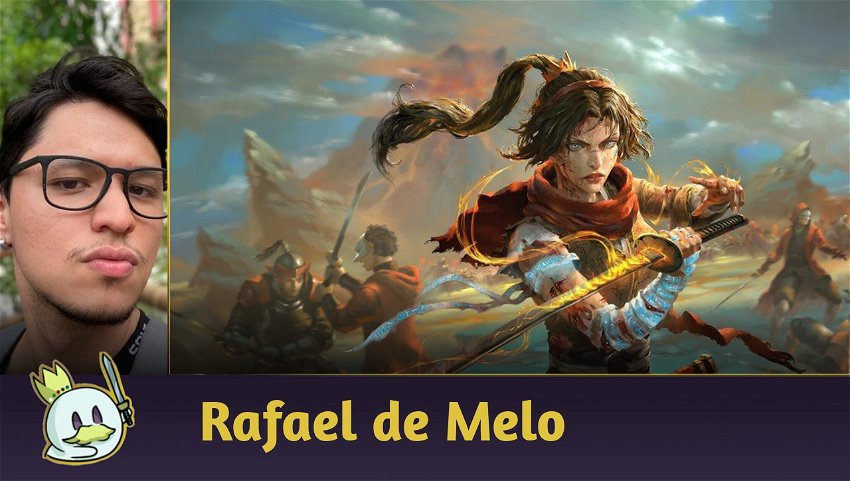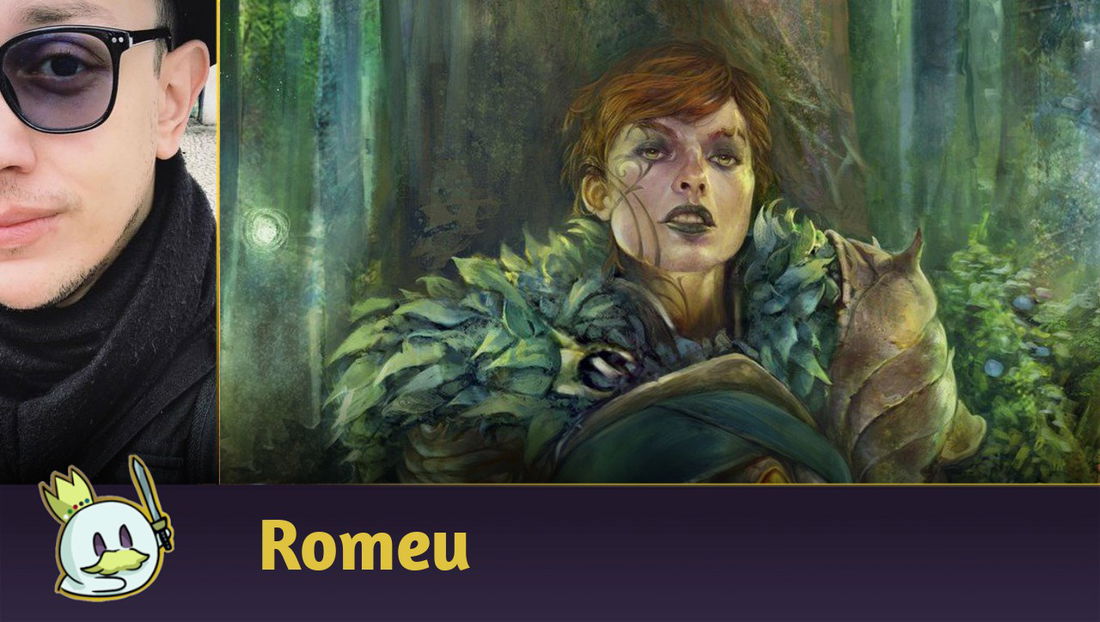You got to know Flesh and Blood, liked the game, built your first deck, decided to join the Commoner format and would like to learn more about the format's cards.
But which cards are most essential? Where should I start to better understand the format? Which cards to purchase first?
The answer to these questions is simple: the Staples!
What is a Staple?
In TCGs, we always say that a card is staple when it has such great importance for a certain format, and it is crucial for the player to know this card — since the odds of that player finding it in a tournament are very high. Therefore, the staples are format-defining cards and model their identity.
In this article, I will present some Commoner staples where, once you know the cards that I will quote, it will be possible to better understand the dynamics of the format and which are the first to look at when thinking about cards to purchase.
If you don't know what the Commoner format is and its rules, I recommend that you read this format guide!
Commoner's Best Staples
Nullrune and Ironrot Equipment


Generic equipments are always welcome in a pool, but some are better than others, and this is the case with the entire Nullrunes cycle. They all have Arcane barrier 1, which is an excellent plan against decks that use this damage to win the game (Runeblade and Wizard). Using at least two of these pieces of equipment is essential on a sideboard for any deck in the format.
And just like Nullrunes equipment, Ironrot equipment is widely played against aggressive decks that have smaller attacks (like ninjas, for example). Its disadvantage is the Blade break, which makes you lose it at the end of the Combat chain when used to defend, however, preventing this damage can be the difference between victory and defeat.
Hope Merchant's Hood

One of the notable differences between Flesh and Blood and other TCGs is the absence of the Mulligan. But that doesn't mean there won't be moments where you are stuck with a hand where any possibility of a play isn't good, and that's where Hope Merchant's Hood shows its strength.
The possibility of it making you perform a sort of mulligan and still choose what to keep in your hand makes this one of the most flexible equipment in the game. Also, because it can be used as Instant, you can perform this "mulligan" on the opponent's turn to look for better defenses or that perfect Defense reaction for the moment.
Snapdragon Scalers

Snapdragon Scalers is one of the most expensive pieces of equipment in the format, and it's no wonder. Its simple ability to grant Go again to an attack as an attack reaction allows for some interesting tricks.
If you attack with, for example, Dustup (1) and provide Go again through this boot, the Aether Ashwing created by it can attack and have Go again with Dromai. Creating these plays can be unexpected for the opponent and guarantee a longer Combat chain.
Razor Reflex and Pummel

Razor Reflex (1), in all its colors, is the best Attack reaction an aggressive deck could wish for. With its low cost, this card allows important damage to pass through the opponent's defense, allowing attacks with on-hit effects to happen (such as Whirling Mist Blossom), and gives the attack Go again if it damages the opponent, being able to sequence more attacks and extend the Combat chain.
But what makes it so flexible is its possibility of also increasing the power of sword or dagger attacks, thus guaranteeing one more counter on Dawnblade or to grow a Harmonized Kodachi as a battle trick. Furthermore, the mere existence of this card alone can make your opponent block inefficiently, fearing some damage getting through.

The same logic as Razor Reflex (1) applies to Pummel (1) for decks that hit with bigger attacks and weapons (like Brutes and Warriors). In addition to the absurd damage that Pummel (1) provides to already huge attacks (using it on an Anothos is a threat on its own), its on-hit effect given to the attack guarantees a delay in the opponent's hand — which is much desired by Guardians.
Scar for a Scar

Scar for a Scar (1), mainly its red version, is a card stamped in any deck that wants to hit hard. The main feature that draws attention to this attack is its power and the possibility (which is not difficult to accomplish) to gain Go again for zero.
Flock of the Feather Walkers

In all its colors, Flock of the Feather Walkers (1) is a very desirable card for decks with go-wide strategies (like Ninjas in general).
In its red version, the 5 attack for a resource is already strong, but its brilliance is in creating a Quicken token, which allows a setup for a future turn, allowing to give an attack Go again and starting the Combat chain with a threat already imposed on the opponent
Unmovable

Control decks want every type of defense possible to lose as little life as possible, and Unmovable (1) (in all its colors) does that job excellently.
At best, you'll do this Defense reaction from the arsenal, and if it does, the red version will defend eight damage. The amount of damage that this card defends is massive and is one of the largest in the format, being able to calmly hold any attack that comes from Levia or Dash.
Sink Below and Fate Foreseen

The two cards (in their red versions) have the same functionality in the decks that use them: they are Defense reactions, both cost zero and can be played from the arsenal and prevent damage very solidly. The main difference between them is in their respective abilities.
The opt 1 in Fate Foreseen (1) is great for tempo/control decks that perform this manipulation from the top of the deck, thus improving end-of-turn draw quality, but Sink Below (1)'s filtering is exceptional.
I would venture to say that Sink Below (1) is possibly Commoner's best card, and one of the best in the game. In addition to an excellent Defense reaction and holding a lot of damage, its optional ability to return a card from the hand to the bottom of the deck (and not discard it) and draw another one while defending is unique in the format, allowing you to better filter your hand without having to pay any resources. If you think about putting some kind of defense in the deck, Sink Below (1) should always be your first option.
At the time of writing this article, Sink Below (1) is the most expensive card in the format, but the price is justifiable, and yet, according to the Teklo Labs website, it is the most used generic card in Commoner, Blitz and Classic Constructed, making it a staple in all formats of the game. So securing three copies of this card is essential for any Flesh and Blood player.
Honorable Mentions
Here I intend to cover more generic cards that practically any deck can have access to, but that does not mean that these cards are the only ones that are most important for the format. Some class cards are so strong that absolutely any deck in the class will run them.
Salt the Wound

Salt the Wound is mandatory in any Ninja deck (like Fai and Ira, Crimson Haze). At first glance, a zero-cost attack based with no Go again appears to be pretty average, however its ability to gain one more power for every other attack that hits this Combat chain is what makes it shine.
In Ninja decks that aim to hit with plenty of attack cards and their weapons, Salt the Wound can easily turn into a five or six damage card — since your opponent won't be able to block all the small attacks, working a lot as well as a game finisher or force block with multiple cards.
Winter's Bite

Another card that deserves a mention because it is widely played by heroes with the ice talent is Winter's Bite (3). The purpose of the card in these decks is clear and simple: delay the opponent's plans by removing a card from their hand, but what makes its blue version so much stronger than the others is its flexibility of use among heroes.
In Iyslander, for example, playing this card from the arsenal on the opponent's turn causes them to discard a card and still need to pay a resource on the next card or ability due to the Frostbite — delaying at least an attack that your opponent could make at that moment.
In an Oldhim, in addition to delay the opponent due to the main strategy, the card can still be used to pay the hero's Defense reaction cost and because it is an Ice type, makes the opponent put a card on top of their deck, also delaying their strategy. And as icing on the cake, the card still has Go again if you want to play it on your turn for zero cost.
Rosetta Thorn

Rosetta Thorn is a weapon exclusive to the Runeblade class. Its ability has such high synergy with the class's strategy that absolutely any Runeblade hero will want to use it.
For just one resource, this weapon can hit for four, however these frames of damage are divided into two of the weapon itself and two arcane damage, making the opponent, if they want to block this damage completely, need to block the weapon and still prevent two arcane damage in some way by paying the Arcane Barrier costs.
There are few cards in the format that, by themselves, block all this damage. This weapon's ability to deal split damage and the inefficiency it generates in blocking that damage makes it a must-have for anyone wanting to play Runeblade.
Conclusion
Despite being a more casual and less complex format, Commoner has an interesting array of cards, since common cards in Flesh and Blood have a higher power level compared to other TCGs.
I aimed to put some of the best cards in the format, but that doesn't mean that there aren't other cards as good as it and also that you should start by purchasing these cards, but if you want to build your Commoner collection, surely these cards must be at the top of yours Shopping list.
Thanks for reading!














— 评论 0
, 反应 1
成为第一个发表评论的人